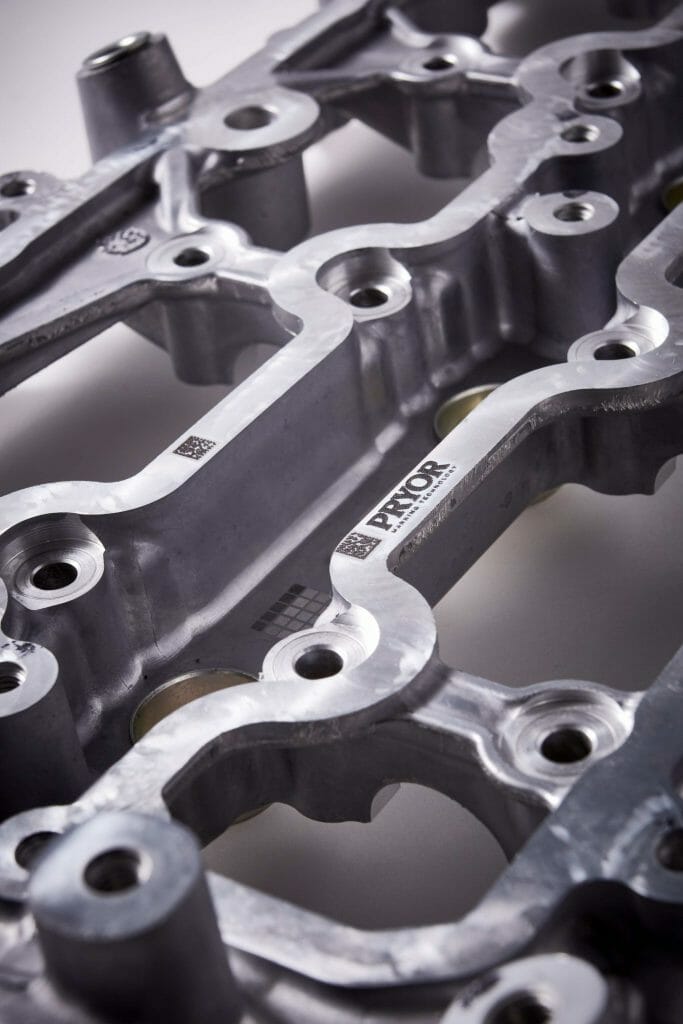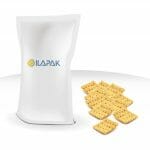Applying 2D Data Matrix codes correctly to components, at the very start of the process, ensures their full traceability and tracking, Alastair Morris, Sales Director at Pryor Marking Technology explains.
The marking of manufactured parts is often overlooked, though it can have huge ramifications for the whole supply chain. In these times of end-to-end part traceability, each manufactured component must have a unique identity, which includes its specific manufacturing history. Rather than simply assigning it a code number, manufacturers can apply a machine readable code, such as a 2D Data Matrix, which stores vital data and can be scanned at any point during the life of the part.
This is critical in industries such as automotive and aerospace, where many components are brought together and assembled in the final product, and may later have to be recalled.
Marking challenges
Several methods, including chemical etching, dot peening and laser marking, can apply a permanent 2D Data Matrix to a part. The nature of the part, such as what it is made from and its size and thickness, may determine the best method to use.
For instance, lasers apply high contrast marks to any type of material, but may be too expensive for general use. Chemical etching gives similar mark contrast at a lower price point, but can be less reliable. Dot Peen is often an ideal method on metals as each dot forms a square of the Data Matrix.
2D benefits
A 2D Data Matrix stores far more data than a 1D barcode, using a grid of squares to store information both horizontally and vertically. It is ideal for marking using laser etching or dot-peening, and can store up to 3116 numbers or 2335 alphanumeric characters, which can also be encrypted.
Data Matrix codes ensure that, even if partially damaged or obscured, most of the data can still be recovered. However, if the Data Matrix is not correctly applied at the start, some of this built-in redundancy is lost.
Getting it right
For this reason, it is vital to apply the code properly in the first place.
- When ‘populating’ the matrix, marks must be sized correctly, neither too big nor too small. They should typically be 60-105% of the ideal size, which is ensured by using accurate, reliable marking techniques.
- Positioning is vital: 2D matrices can be as small as 1mm2 but marks within them must still ‘line up’ within the theoretical reference grid, and not be misaligned. Again, reliability and accurate techniques are key.
- Distortion can also be a problem, especially with curved surfaces. X and Y axes should ideally be at 90 degrees, though slight variations can be tolerated. One way to minimise this is to ensure that the object is held firmly as it is scanned.
These 2D Data Matrix codes have revolutionised manufacturing, and complex supply chains. Manufacturers must ensure that they use the best, most appropriate marking techniques to take full advantage of them.






